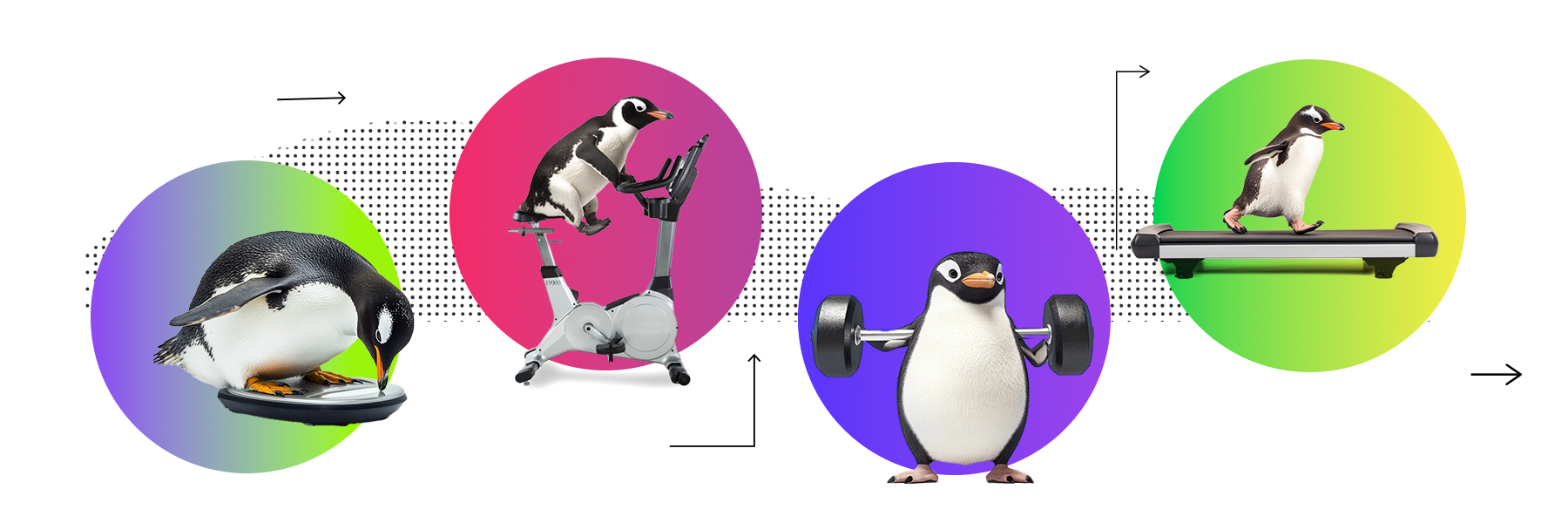
Getting Fit with AI: Your Transformation Plan
Ah, January! The month health clubs happily open their doors to New Year’s resolvers, knowing full well most won’t show up again ‘til June. Working out is a habit, hard formed. It turns out that the same applies to GenAI adoption. Lots of employees jumped into LLMs in 2024, did a couple of metaphorical jumping jacks, and decided prematurely, “This isn’t for me!”
Fortunately for these employees, many marketing leaders aren’t giving them a pass on GenAI. Instead, they are providing comprehensive guidance, helping them to learn and appreciate the transformative value of these new tools. Here are some of the training regimens and insights we gleaned from conversations with Forrester’s Lisa Gately, AI practitioners Tahnee Perry and Liza Adams, and our Huddlers.
Start with a Good Orientation
Just like a good trainer wouldn’t throw someone straight onto the bench press, successful companies aren’t just telling their teams to “go play.”
“Success requires treating AI adoption with the same rigor as other major launches,” Gately notes, emphasizing that companies need ongoing training sessions, not one-off sessions. A tech company implemented weekly 10-minute challenges and office hours with experts after the initial bootcamp. Did it pay off? One company’s GenAI literacy program saved the equivalent of 14 FTEs in one year.
Customize Your Training Plan
Smart companies are moving beyond generic AI training into role-specific paths. “What works well is running a discovery session with the executive team to figure out your pain points,” Perry notes. Her prescription includes:
- Create custom GPTs for different functions
- Create human-AI org charts showing clear roles
- Build an LLM-driven chatbot to answer GenAI policy questions
- Start a cross-functional AI Council
- Celebrate the wins and success stories
Your Form Matters
“Some people are fearful for their jobs; it paralyzes them,” Adams explains, emphasizing the need for empathy and guidance as teams face new workplace technology.
“This is truly human change management,” she continues. “It is about a change in mindset and a change in behavior.” The ideal scenario? Show how AI enhances rather than replaces roles. Part of this is about sharing and celebrating success stories!
Track Your Gains
Huddlers are finding it surprisingly easy to justify GenAI investments compared to traditional software. The secret? Clear benchmarking and comprehensive metrics. This means examining current workflows and tracking both cost/hours and output quality. For example, how many hours does it take your team to craft a report and repurpose the content across various channels AND how is all of that content performing? You can then compare this data against a workflow enhanced by GenAI. Beyond tracking time saved, you should be able to connect AI initiatives to key business metrics like pipeline generation, conversion rates, and customer retention.
Think Bigger, Train Smarter
Exercise isn’t necessarily about adding more weights or running longer. And AI isn’t just about pumping out content. “Content’s the low-hanging fruit, but don’t stop there,” Gately explains. “Ask how these tools enable you to have better planning, better precision, and be more audience-centric.”
Pro Tip: Use AI as a strategic thought partner and make sure your prompts ask the LLMs to challenge conventional thinking.
Fuel In, Energy Out
You can’t out-train a bad diet, and you can’t out-smart bad data. “The more first-party data you have, the more likely you can create advanced uses of GenAI,” Gately notes. But remember to protect your company’s confidential information – that’s where IT and legal come in to establish enterprise-sanctioned tools over the “bring your own AI” approach.
Check Your Existing Equipment
Look at what’s around you at home; you might not even need to join the gym down the block. “I was finding teams going after newer platforms and ignoring what they currently had in-house like Salesforce’s Agentforce and HubSpot’s Breeze,” Perry observes.
Before you add a new tool, be sure it solves a strategic problem, AND that isn’t already provided by an existing vendor. No doubt all-in-one solutions will emerge from the big tech companies, but it remains to be seen whether or not those offerings will outperform a cobbled-together multi-tool approach.
Winning Moves: GenAI in Action
How are CMOs using GenAI to reach new heights? Here are a few shared in the last month:
- Sales Intelligence: Analyze unstructured sales notes to yield leverageable insights.
- Nurture Streams: Let GenAI decide the number of touches and sequences based on several months of historical data.
- Educate Prospects: Dot.ai chatbot performs like a BDR. Train it on your data so prospects can learn how you’re different from your competitors.
- Event Analytics: Analyze attendee engagement patterns to extract key themes and sentiments and to connect event-garnered insights to the broader customer journey.
- Localization: Translate your website using a tool like CrowdIn
- Personalization: Use AI to customize messaging for different segments of buying groups
- Gap Analysis: Analyze content performance and gaps versus competitors
- Extend Content Value: Enable quick reformatting and repurposing across channels
And yes, with all of these, human quality control is still a MUST.
Any to add to our list? Let me know.